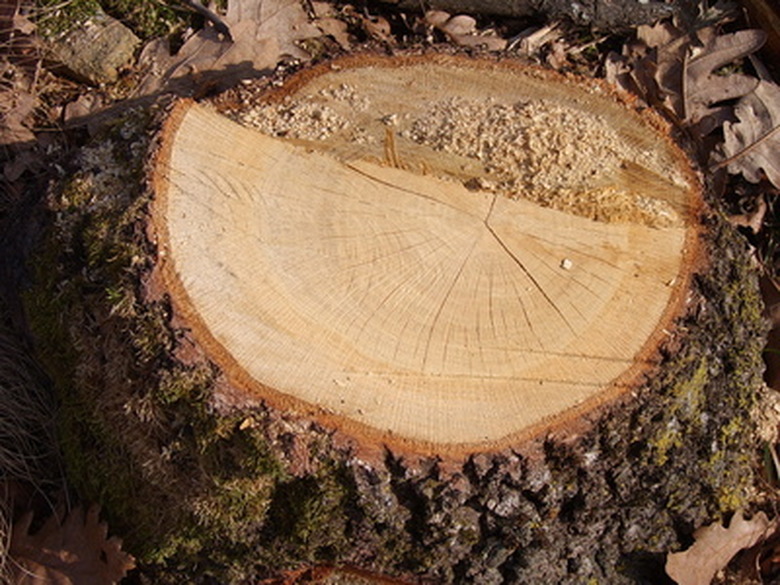Laws On Burying Tree Stumps
Because a tree stump is connected to roots that extend deep into the soil, removing that portion of a tree is more complicated than removing the trunk and limbs. Options for removing a stump include grinding the stump down, digging it up or burying it. Burying a stump is common due to the lack of effort involved, but city ordinances in some areas may prohibit such an action.
Background
When a tree stump is buried, the wood continues to decompose. As the stump rots it can cause changes to the surrounding soil. These changes can lead to sink holes or other changes in the soil's surface level. If a home, apartment building or other structure has been built over the buried stump, it can damage the structure. A sinkhole caused by buried stumps was blamed for an apartment collapse in North Brunswick New Jersey on April 30, 1993. City ordinances against burying stumps are aimed at preventing this type of problem.
Other Problems
In addition to sinkholes, buried stumps and other woody debris can contribute to other problems in and around the areas where they are buried. The rotting wood can attract roaches and carpenter ants. Additionally, as the woody debris decomposes, it can leak fouled water into groundwater. This is a concern for areas where artesian wells or other forms of groundwater are a water source.
Administration
Laws covering the disposal of trees and other woody debris vary from city to city and state to state. For example, in Alpharetta, Georgia, the city ordinances state that no developer may bury woody debris unless they receive city permission. Anyone wishing to bury woody debris must submit a detailed site plan and the location of the burial must be shown on any plans on file with the government. By contrast, tree removal in New York City just requires a permit from the parks department.
Some laws only dictate the way in which builders or contractors must dispose of woody debris at a construction site, others specifically prohibit burying stumps. In some states, laws outline how to bury stumps, while in others the state administration has left the disposal of woody debris up to individual cities. In New York state there are regulations in place that state that contractors may dispose of woody debris by burying in areas where an engineer approves within the contractor's right of way or on another property owned by the contractor.
Persons interested in legally burying a stump can typically find guidance in their city's building ordinances before acting. City administrators will typically be aware of state laws concerning burying tree stumps.
Enforcement
Partially because the administration of such laws is unclear, enforcing the laws is similarly unclear. Sinkholes and other drops in the landscape occur long after a stump is first buried. Prosecuting a perpetrator retroactively may not be possible. If the person who buried the stump can even be found, the laws against the action may not have been in place when the act took place. Prosecution typically involves catching a person in the act of burying the stump in areas where such action is expressly forbidden by city or state ordinances. Perpetrators of a violation typically are served a temporary restraining order to cease the activity until proper permissions and procedures are put in place.
Repeat offenders may face stiff fines. For example, in a 2011 Rhode Island Supreme Court case, the defendant repeatedly violated city ordinances by removing trees and topsoil from a property. The defendant was ordered to cease all work until proper permits and erosion control plans were filed with the local city and the defendant required to pay a $500 fine for each violation of his temporary restraining order.
